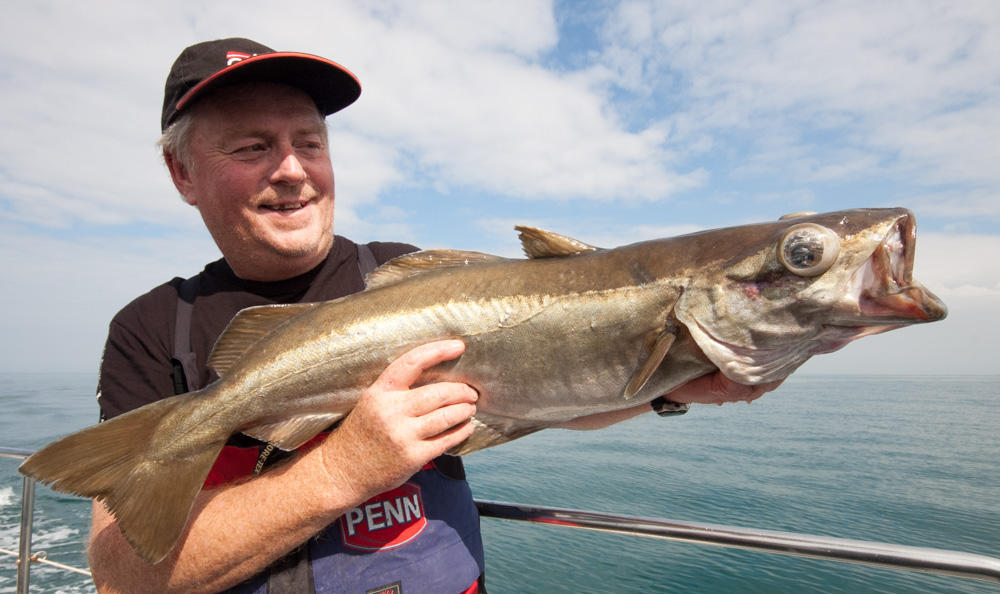One of the best tools an angler can buy is a barometer. It does not need to be anything fancy or expensive, just a serviceable clock type barometer. These need to be positioned though, on an internal outside facing wall to get accurate readings. Some of the new “weather stations” available are also good.
The barometer is by far the simplest and best though. It is used to indicate rising and falling barometric pressure, which has a major effect on when fish will feed, but also when they choose not to feed. If you get in to the habit of checking the barometer every day, you will see the indicator needle move upwards clockwise to indicate rising pressure, and fall anti-clockwise to show falling pressure. If you gently tap the face of the barometer, the needle will naturally adjust, and give you an instant indication of whether pressure is rising or falling. There are also word indicators on the inner face that tells you, by pressure readings, what sort of weather to expect. The word Change is commonly used as the in between marker, with rising pressure given as first Fair, then Very Dry. As pressure falls and the needle drops left of Change, it will read Rain then Stormy.
A fish feels changes in the barometric pressure through its swim bladder. Fish with small swim bladders are affected less by pressure change than fish with bigger swim bladders, the body density of smaller fish being closer to that of the surrounding water.
Fish with larger swim bladders quickly feel dropping air pressure. As the pressure drops, the pressure on their swim bladders lessens, which causes the bladder to expand. This causes discomfort to these fish. They respond to this discomfort by dropping deeper in the water column to stabilize that pressure, or by absorbing extra gas into their swim bladders. However many food items they feed on will have swim bladders too, and this in turn will affect where and when the bigger predators feed as their target baitfish also adjust depth.
This increased stress means they have little interest in feeding. Their prime thought is to find a depth at which they feel comfortable and can adjust their swim bladder accordingly. Think wreck pollack here. When you go on a wreck one day and hit fish after fish, then go the next day and they are reluctant to feed, this is one of the most likely causes, that a change in barometric pressure has forced the fish deeper and tight in to the wreck, and made them less prone to feeding. This is also why some days the pollack take lures within the first 20-feet of the seabed, but not higher, and on other days they may be 60-feet or more up above the wreck.
Shore lure anglers will also notice a change when bass fishing and using surface poppers. One day the bass hit the surface poppers, the next day, you need to fish deeper with a deep diving plug to take a fish. Dropping pressure has forced the bass deeper. This also explains why during periods of bad weather and storms, even in deeper water, ledger fishing can be poor at best. The low pressure subdues the fishes feeding instinct.
During rising pressure, and periods when high pressure is stable, the fish will feed throughout the water column, and quite actively most of the time.
A typical scenario is during settled high pressure, the fishing remains consistent, often good. Then you see the barometer needle backing anti-clockwise indicating a cold front is heading our way. Ahead of this front is low pressure. The fish sense the forthcoming change in pressure and will feed heavily right up until the point the pressure actually starts to drop, then change their feeding habits going deeper and slowly eating less and less to a point when few if any fish feed at all.
As the front passes through and high pressure reasserts itself, it can take at least three or four tides before the fish start to feed aggressively again. This is the time it takes for the fish to readjust their swim bladders. However, after those few tides have passed, the fish can go on a feeding binge and some great catches can be enjoyed. This is often the third day after the pressure starts to rebuild.
They may not tell you this, but some of the very best charter skippers use barometric pressure as a guide as to which marks and wrecks to fish. They, over many years, have realised, that in certain weather patterns and dropping pressure, only certain wrecks at a certain depth will fish. You’ll also notice that as pressure rises, the same skippers will move shallower. This is the reason why, they understand how pressure affects the fish and react accordingly to maintain their catches.
So far, man’s understanding of the science behind fish’s reactions to changing weather patterns and pressure systems remains limited. There is currently major work in hand in the USA looking at this, but it will likely be years yet before real conclusions are made. Basic observation passed down by previous generations has alerted us to the facts we do already know today.
As anglers, work and family commitments mean we often have to go fishing as and when we can, immaterial of what the weather is doing. Those of you with more freedom to act spontaneously, if you can use the barometer to predict what fish might do as pressure changes, then you will see an upturn in catches. Yes, there are many factors that dictate whether we catch, such as food availability, wind direction, tide size, and much more, but do not ignore the pressure readings, as these play a vital role too.


